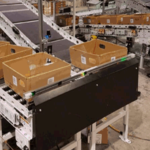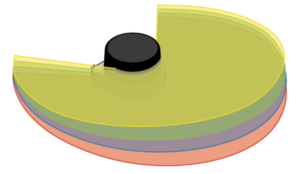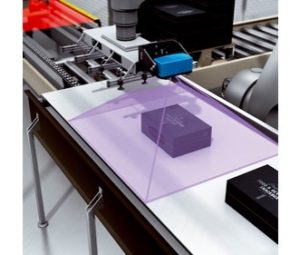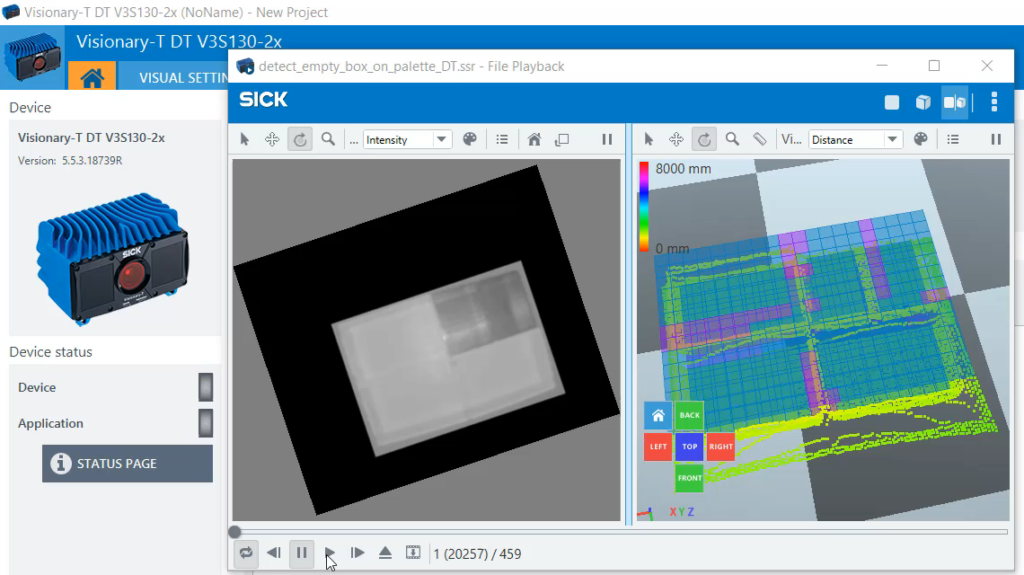From robotics to the factory floor, LiDAR technology is commonplace in industrial automation. In recent years, LiDAR technology has become more heavily used on autonomous mobile robots (AMRs). But there are many other applications you may not know about. For LiDAR, we’ve noticed three top trends in LiDAR.
Sensorized LiDAR
 Typically a compact, lightweight laser scanner, sensorized LiDAR are on the smaller end and are considered entry-level. At SICK, the TiM100 or TiM150 are the newest sensorized LiDAR offerings. With a range of about 3 meters (10 meters for TiM150), these sensorized LiDAR products function well even in ambient light thanks to the HDDM technology. This reduces cost and complexity in LiDAR detection.
Typically a compact, lightweight laser scanner, sensorized LiDAR are on the smaller end and are considered entry-level. At SICK, the TiM100 or TiM150 are the newest sensorized LiDAR offerings. With a range of about 3 meters (10 meters for TiM150), these sensorized LiDAR products function well even in ambient light thanks to the HDDM technology. This reduces cost and complexity in LiDAR detection.
This type of LiDAR is used in some AMR or AGV applications, but it also works well for bin height detection. Essentially, it can be used to know if a bin is full or empty. This is especially useful in a packaging and production environment. The LiDAR sensor creates an invisible plane of detection and can be oriented to detect the presence of objects that shouldn’t be there – perhaps an overfilled bin or a tote with objects hanging out of it.
 In bin picking and passthrough detection applications, sensorized LiDAR can also be used. This allows manufacturers to monitor the production of products and ensure quality control. If an operator reaches into the incorrect bin, the system will signal the operator. This used to previously be done with light curtains, but a single TiM is simpler to install and wire.
In bin picking and passthrough detection applications, sensorized LiDAR can also be used. This allows manufacturers to monitor the production of products and ensure quality control. If an operator reaches into the incorrect bin, the system will signal the operator. This used to previously be done with light curtains, but a single TiM is simpler to install and wire.
Multi-Layer LiDAR
 Some people call it 3D LiDAR, but at SICK it is called multi-layer. At SICK, the MRS1000 provides not just a single plane like in the TiM100, but three more planes that provide additional detection. This can be used to detect objects at a long distance.
Some people call it 3D LiDAR, but at SICK it is called multi-layer. At SICK, the MRS1000 provides not just a single plane like in the TiM100, but three more planes that provide additional detection. This can be used to detect objects at a long distance.
Additional planes also add an extra layer of detection that other types of LiDAR cannot. For example, if an object isn’t correctly aligned with the plane, another plane may pick it up instead. This allows more flexibility so that if things aren’t perfectly aligned or 100% always in the exact same position, a multi-layer sensor can adapt to it.
Another reason to use multi-layer LiDAR is to detect pallet overhang. The MRS1000 can be used to scan pallets to look for any objects that aren’t supposed to be there. It can also ensure that the pallet is in order and that no objects are hanging out that might get caught up on equipment, puncture stretch wrap, or anything that will mess up the line. It can also account for pallets that aren’t completely vertical because it’s multi-layer.
Solid State LiDAR
 The last LiDAR trend is solid state LiDAR. Instead of a single plane or multiple planes like the previous two, this type of LiDAR provides a camera view of everything it looks at. SICK’s Visionary-T is the leading edge of technology in this area. With the Visionary-T, a 3D snapshot is taken of the surrounding area that goes beyond just an image. It also provides the depth or distance associated with it.
The last LiDAR trend is solid state LiDAR. Instead of a single plane or multiple planes like the previous two, this type of LiDAR provides a camera view of everything it looks at. SICK’s Visionary-T is the leading edge of technology in this area. With the Visionary-T, a 3D snapshot is taken of the surrounding area that goes beyond just an image. It also provides the depth or distance associated with it.
This type of LiDAR can be used in many AMR applications, but also works well in other applications. For example, in bin picking applications, the Visionary-T can provide a 3D image of whatever is in the bin, allowing the robot to know when and what it should pick up.
One final application is in package dimensioning for pallet loading. The robot’s suction gripper collects several cartons and stacks them on the pallet. The camera determines the position and dimensions of the carton so the robot can correct the predefined positioning data to achieve the right gripping result. The camera is quick to install, ready for operation immediately, and provides reliable high-quality 3D data in just one shot.
 Watch our webinar to see what’s new in the world of LiDAR technology!
Watch our webinar to see what’s new in the world of LiDAR technology!






